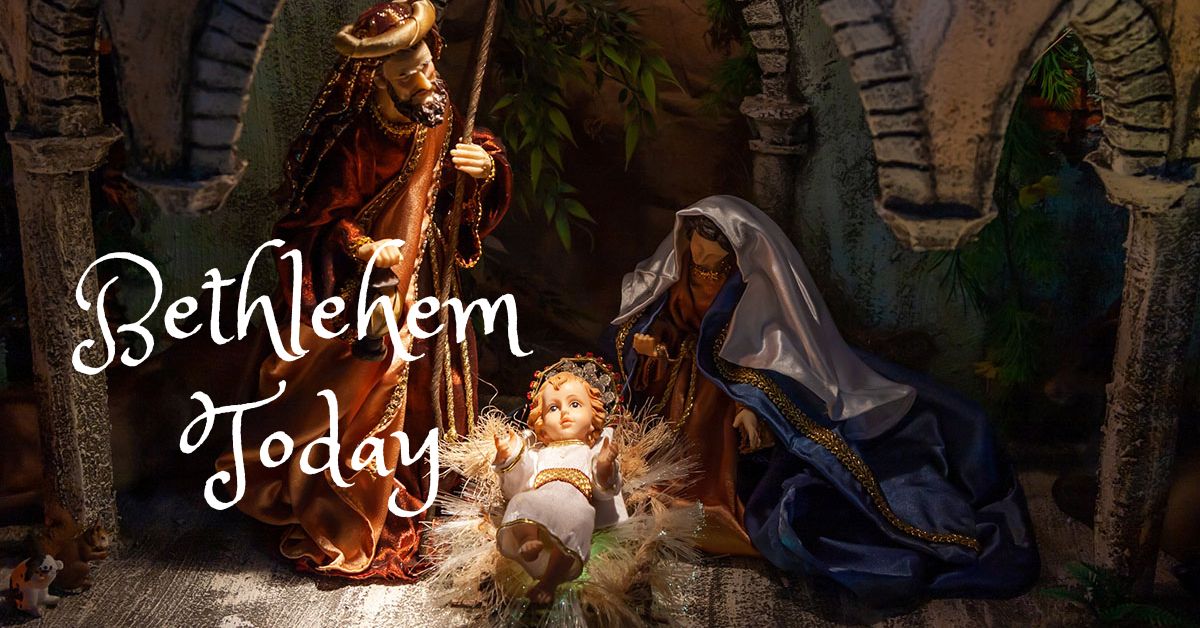How to Find Beauty and Divinity in Divided Bethlehem

It struck me as I was setting out the beautiful porcelain figures in our Christmas manger scene this year. Starting with the Holy Family. Adding the wise men, the shepherds, a donkey…even a camel. This was Christmas. A wooden manger. No room in the inn.



In fact, there were no “inns” in the time of Jesus, none in Bethlehem and not in the Air Bnb-style. Barren, rocky landscapes, dusty and blistering, parched by hot winds. This is Bethlehem. There are the caves set in the hills that have provided shelter for shepherds and their flocks for centuries. As they do today.

These were the fabled inns, stops on the route for travelers. On the night of Jesus’ birth, the cave in Bethlehem only had room far back in the deepest recesses, where the animals were sheltered, in the manger. It would have been crowded, noisy and filled with the smell of livestock, cooking and unbathed, road-weary travelers. Somewhere in the torch-lit darkness, a young woman labored and delivered a son.
The Place Where He Lay
I traveled to Israel in May, spending an afternoon in Bethlehem, visiting the Church of the Nativity. The contrast is startling. Israelis are not permitted to enter Bethlehem.
The area is under a full control of the Palestinian Authority, therefore Israel has extremely limited ability to protect its citizens and because of this, Israelis are not permitted into the city. There was a border crossing and I was asked to show passport proof of ID.

Entering the church that marks the site of Christ’s birthplace means having to stoop low. The only doorway in the fortress-like front wall is just 1.2 metres high.
Today’s basilica, the oldest complete church in the Christian world, was built by the emperor Justinian in the 6th century. It replaced the original church of Constantine the Great, built over the cave venerated as Christ’s birthplace, and dedicated in AD 339.
As the ornamentation, icons and lamps in the front of the church suggest, the basilica is now almost wholly a Greek Orthodox place of worship. The Armenian Orthodox own the northern transept. The Catholics have the site of the manger and the adjoining altar next to the Nativity grotto.
Seetheholyland.net


One particular cave, over which the first Church was built, is traditionally believed to be the actual place where Mary gave birth. As a Christian, my feelings were overwhelming. Here, at this spot where I knelt and touched, was one of the holiest places in the world. Here was Christmas.




A small altar in the Grotto of the Manger is dedicated to the Adoration of the Magi, the Three Wise Men described in Matthew’s Gospel as coming from the East (probably Persia) to worship the newborn Jesus. This is where the Catholics celebrate Mass.
seetheholyland.net

Parts of the original basilica church built in 339 AD are visible below ground and was designed so that its eastern end surrounded and offered a view of the cave. It is the oldest Christian church in daily use.

Today it is embedded in an extraordinary architectural ensemble, overseen by members of the Greek Orthodox Church, the Custody of the Holy Land and the Armenian Church, under the provisions of the Status Quo of the Holy Places established by the Treaty of Berlin (1878).
Unesco



The different governing sects share the church and the site. Each has geographical boundaries within the building complex. Masses are shared, their timing coordinated to avoid conflicting worship. And yet the reverence is preserved. Here, marked by an opening surrounded with the rays of a silver star, a child was born whose impact on world history is certain.

This visit re-shapes my Christmas thoughts this year. Perhaps forever.
Related Posts
Rio de Janeiro and the Girl from Ipanema: Where Music Meets the Sea
Rio de Janeiro is more than a city—it’s sun-soaked poetry. From the iconic Christ the …
May 3, 2025Visit the Most Beautiful Bookstore in the World
It’s called El Ateneo, Spanish for “The Athenaeum”, a place associated with learning, the arts …
April 26, 2025

Leave A Comment